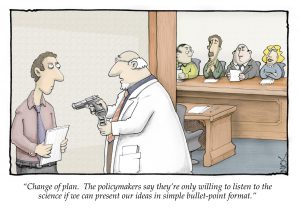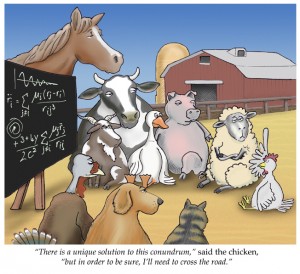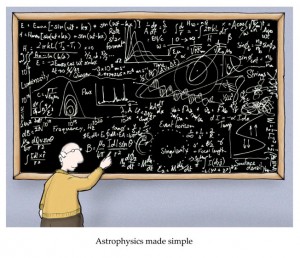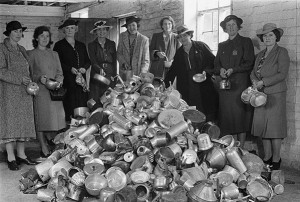 I’ve just spent a very pleasant few days in New York City teaching post-docs at Mount Sinai my recipe for a NIH grant. We focused on the K99/R00 scheme, which is for applicants less than 4 years from their PhD. K99/R00 applications must include career-development as well as research, which makes them more complex than a pure research grant, but the recipe I developed can easily accommodate other grant schemes by adjusting the formula for their assessment criteria. Before I describe the recipe – how you get the grant written – I need to say something about the formula – what the finished grant consists of.
I’ve just spent a very pleasant few days in New York City teaching post-docs at Mount Sinai my recipe for a NIH grant. We focused on the K99/R00 scheme, which is for applicants less than 4 years from their PhD. K99/R00 applications must include career-development as well as research, which makes them more complex than a pure research grant, but the recipe I developed can easily accommodate other grant schemes by adjusting the formula for their assessment criteria. Before I describe the recipe – how you get the grant written – I need to say something about the formula – what the finished grant consists of.
The Formula
The formula is based on the principle that you should make it as easy as possible for those who carry out the peer review of your grant to do their job. NIH makes it very easy to apply this principle because they take great trouble both to explain their peer review process and to list the review criteria for every kind of grant they offer.
The peer review process is carried out by a study section, a group of about 15 scientists whose expertise covers the area of the grant. Three of them, the reviewers, have to produce a written assessment of the grant and score it against the review criteria before the study section meets. At the study section the reviewers present the grant orally, then it is discussed openly and then scored by secret ballot. All members of the study section join in the discussion and vote on the score even though they may not have read the grant, although they will probably have read the 1 page Specific Aims, or the 30 line Summary. So the formula has two requirements.
- It must be very easy for the reviewers to understand the grant quickly and to find the detail that shows whether or not it meets the assessment criteria.
- It must be easy for the other members of the study section to speed read it and understand it.
To make it easy for reviewers, the three versions of the grant – the 12-page Research Strategy, the 1 page Specific Aims and the 30 line Summary should be recognisably the same, so that someone who has read the Summary or the Specific Aims should find the Research Strategy looks familiar. I recommend that you define the grant with a set of about 10 key statements that address the review criteria. The key statements begin major sections of the Research Strategy and are followed by text that justifies them and convinces the reviewer that they are true. The reviewer will be familiar with the key statements because they appear in the same order in the Specific Aims and the Summary, but with less text to justify them.
The repetition of the key statements between the Summary, the Specific Aims and the Research Strategy helps the other members of the study section to feel that they understand the Research Strategy as soon as they glance at it. To make it possible for them to speed-read it, the top line of every paragraph should contain the main message of the paragraph and there should be white space between the paragraphs.
The Recipe
To cook up a grant with this formula you need to start by deciding what key statements you need. NIH assessment criteria are very helpful here.
- All grants are required to have a number of specific aims – goals that the research hopes to achieve. Three is the ideal number of specific aims – just as it is the ideal number of points to make in an emphatic statement.
- The Research Strategy document must be divided into three sections, each of which is assessed. They are Significance, how important the research is; Innovation, what is new about the research, and Approach, how you are going to do the research.
Each specific aim needs one key statement to state its significance and one to state the approach to achieving it. Innovation can be stated separately for each aim or in a single staement that covers all three aime. Thus you need between 7 and 9 key statements to cover the basic criteria.
In addition you should have a couple of key statements to introduce the Research Strategy. These make the ‘elevator pitch’. The first needs to say what overall outcome is hoped for, something about how it will be achieved and something about your credentials for carrying out the project. The second needs to say something about the project’s overall importance. You can think of these statements as the opening remarks of the reviewer addressing the study section. They correspond to key sentences 1 and 2.
Finally you probably need an ‘onwards and upwards’ statement to finish off the Research Strategy, something that says how you will take the research forwards at the end of the project.
The K99/R00 grant has a training requirement. The research project must contain a mentored (K99) component and an independent (R00) component. The candidate is also required to submit a training and career development plan. The criteria make it clear that the K99 project must develop the candidate’s skills to prepare them for the independent phase. One or two extra key statements are needed to address this aspect of the project.
Once you have drawn up your list of key statements you draft them. They are the introductory sentences of the main subections of the Research Strategy. Don’t spend too much time perfecting these sentences. Get on with writing the sections that they introduce. As you draft those sections you will naturally polish the key statements until they are as good as you can make them.
Once you have a complete draft of the Research Strategy you can copy the key statements from it into the one-page Specific Aims document. Make that document up to a page by cutting and pasting more text from the Research Strategy or by drafting new text. You should cut and paste wherever possible to maximise the overlap between the two documents.
There are a number of sources that help you with content.
- The NIH website and the application guide give excellent advice on the content that you need in all the different components of the application.
- On Kindle Writing the NIH Grant Proposal, A Step by Step Guide, by Gerin et al. This really is a step by step guide with lots of examples from a successful proposal.
- Also on Kindle Guide to Effective Grant Writing: How to Write a Successful NIH Grant Application by Otto Yang. This is shorter and concentrates more on principles.
These can help you to modify the formula by choosing different sets of key statements and by varying which key statements appear in the different components of the application. But the best way to minimise the pain of writing is to follow the recipe.









